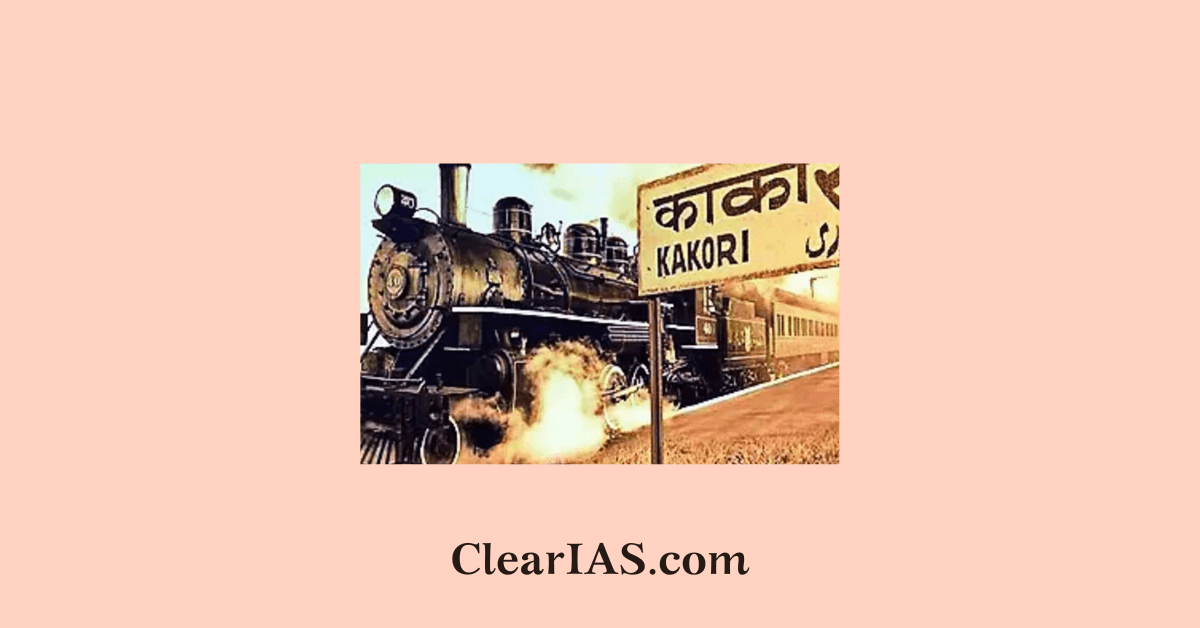
The Kakori Train Action is a Symbol of Revolutionary Spirit, Communal Unity, and the Struggle for Complete Independence in India’s freedom movement. As this year marks 100 years since the incident, read here to learn all about the courageous act.
The annals of India’s freedom struggle are replete with acts of extraordinary courage, but few have carried the symbolic weight and enduring legacy of the Kakori Train Action of August 9, 1925.
Far more than a daring heist, it was a meticulously planned strike against the economic backbone of colonial exploitation, executed by a band of idealistic young revolutionaries from the Hindustan Republican Association (HRA).
It not only challenged the might of the British Raj but also stood as a living testament to Hindu-Muslim unity in the face of divisive colonial policies.
Kakori Train Action (August 9, 1925)
- Location: Kakori, near Lucknow, Uttar Pradesh.
- Event: Robbery of Number 8 Down train travelling from Shahjahanpur to Lucknow to seize official government cash for financing revolutionary activities.
- Organisation: Hindustan Republican Association (HRA).
- Objective: Strike a blow at colonial economic resources and fund armed struggle for independence.
Key Personalities Involved:
- Ram Prasad Bismil
- Ashfaqullah Khan
- Chandrashekhar Azad
- Manmathnath Gupta
- Rajendra Lahiri
Indian revolutionaries in the 1920s
By the early 1920s, disillusionment with the limited gains of non-cooperation and the brutal suppression of dissent had spurred a section of the nationalist movement towards armed struggle.
- The HRA, led by Ram Prasad Bismil, sought to finance revolutionary activities by directly targeting the British government’s resources.
- The treasury carried aboard the 8 Down Saharanpur-Lucknow Passenger Train represented both the material wealth of the Raj and the symbolic plunder of Indian resources.
- After a failed attempt on August 8 due to timing issues, they struck the following day. Pulling the emergency chain near Kakori, they overpowered the train guard and passengers, reassured civilians of their safety, and broke into the iron safe.
Symbol of Hindu-Muslim Unity
- The deep camaraderie between Bismil, an Arya Samajist, and Ashfaqullah, a devout Muslim, embodied a unity that challenged the British “divide and rule” strategy.
- Letters penned before their executions reveal their shared belief that communal harmony was as crucial to independence as the overthrow of British rule.
- Their alliance was celebrated by contemporaries like Bhagat Singh, who viewed it as an ideal for the nationalist movement.
Impact on the Freedom Struggle
The Kakori Train Action had far-reaching consequences.
- The funds seized, about ₹4,600, were used to sustain revolutionary operations, eventually leading to the transformation of HRA into the Hindustan Socialist Republican Association (HSRA) in 1928.
- HSRA’s later emphasis on aligning with workers and peasants reflected the ideological evolution sparked, in part, by Kakori.
- The audacity of the heist also influenced the Indian National Congress, contributing to its shift towards the demand for “Poorna Swaraj” at the 1929 Lahore Session.
The Price of Defiance
British retaliation was swift: Bismil, Ashfaqullah, Lahiri, and Roshan Singh were executed in 1927; others were imprisoned or transported for life.
Their sacrifice galvanised youth across India, reinforcing the message that freedom required not just petitions and protests but also courage in the face of death.
About HRA & HSRA
Hindustan Republican Association (HRA) |
Hindustan Socialist Republican Association (HSRA) |
|
Formation |
1924, Kanpur |
September 1928, Feroz Shah Kotla, Delhi |
Founders & key figures |
|
|
Context |
|
|
Objectives |
|
|
Key activities |
|
|
Decline |
Severe crackdown after Kakori; execution and imprisonment of leaders weakened the network. |
Arrests and executions of leaders (Bhagat Singh, Rajguru, Sukhdev in 1931) and Azad’s martyrdom (1931) crippled organisation. |
Timeline: HRA to HSRA (1925–1931)
Year / Date |
Event |
Key Figures |
Significance / Outcome |
9 Aug 1925 |
Kakori Train Action |
Ram Prasad Bismil, Ashfaqullah Khan, Chandrashekhar Azad, Rajendra Lahiri, Manmathnath Gupta |
Robbery of govt. cash to fund revolution. Demonstrated discipline (no civilian harm). Led to a British crackdown. |
Dec 1927 |
Executions in the Kakori Train Action |
Bismil, Ashfaqullah, Roshan Singh, Rajendra Lahiri |
Martyrdom inspired youth; a setback to the northern revolutionary network. |
Sept 1928 |
Formation of HSRA at Feroz Shah Kotla, Delhi |
Bhagat Singh, Azad, Sukhdev, Shiv Verma, Vijay Kumar Sinha |
Shift from HRA’s nationalist republic idea to Socialist Republic vision; socialism added to revolutionary goals. |
17 Dec 1928 |
Assassination of Saunders (Lahore) |
Bhagat Singh, Azad, Rajguru |
Revenge for Lala Lajpat Rai’s death in the Simon Commission protests. Misidentified target; Saunders killed instead of Scott. |
8 April 1929 |
Central Legislative Assembly Bombing |
Bhagat Singh, Batukeshwar Dutt |
Protest against Public Safety Bill & Trade Disputes Bill. Non-lethal bombs, leaflets shouted slogans “Inquilab Zindabad”; the court used as a propaganda platform. |
Oct 1929 – March 1931 |
HSRA trials |
Bhagat Singh, Rajguru, Sukhdev, others |
Conducted hunger strikes in jail, drew attention to political prisoners’ rights. |
23 March 1931 |
Execution of key leaders |
Bhagat Singh, Rajguru, Sukhdev |
Sparked nationwide protests; became immortal symbols of revolutionary sacrifice. |
27 Feb 1931 |
Chandrashekhar Azad’s martyrdom (Alfred Park, Allahabad) |
Azad |
Surrounded by police, fought till the last bullet; he shot himself to avoid capture. End of HSRA’s central leadership. |
Legacy and Contemporary Relevance
A century later, Kakori remains more than a historical footnote.
It serves as a reminder that the struggle for justice, whether against colonialism, communalism, or socio-economic inequality, requires both unity of purpose and a willingness to act.
In an era where divisive narratives threaten social cohesion, the Hindu-Muslim solidarity of Kakori offers a timeless lesson in nation-building.
Conclusion
The Kakori Train Action was at once a tactical strike, a moral statement, and a revolutionary milestone.
It underscored the interdependence of political freedom, social unity, and economic justice.
As India commemorates its centenary, the challenge is to uphold its twin legacies: the courage to confront injustice and the wisdom to transcend communal divisions in pursuit of a common destiny.
Related articles:







Leave a Reply